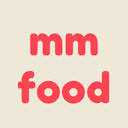Navigating Low-Oxalate Diets: Your Zimbabwean Cuisine Survival Guide
Enjoy Zimbabwean cuisine confidently on a low-oxalate diet. Learn how mm food app translates menus and identifies oxalate-rich risks, plus discover safe traditional dishes to savor.
MM Food Team

Dine Confidently Anywhere
Get the MM Food app for instant menu translation and allergy detection.
Navigating Low-Oxalate Diets: Your Zimbabwean Cuisine Survival Guide
Enjoying Zimbabwean cuisine while managing a low-oxalate diet can feel overwhelming, but it doesn’t have to be! For those with kidney stones, inflammatory conditions, or specific dietary needs, controlling oxalate intake is crucial. Zimbabwean dishes often feature nutrient-dense ingredients, yet many traditions rely on high-oxalate foods like spinach, sweet potatoes, peanuts, and okra. This guide—and the mm food app—ensures you savor authentic flavors safely and stress-free.
Understanding Oxalates in Zimbabwean Food
Oxalates are natural compounds found in plants that, when consumed excessively, can crystallize in the kidneys. Many beloved Zimbabwean staples contain moderate-to-high oxalate levels:
- Leafy Greens: Covo (collard greens), rape greens, and pumpkin leaves.
- Legumes & Nuts: Peanut-based sauces (dovi) and bean stews (nyemba).
- Tubers: Sweet potatoes and beetroot in salads or sides.
Dining out compounds these challenges. Menus in unfamiliar languages or vague ingredient lists make it hard to spot hidden risks like spinach in muriwo stews or peanut thickeners in savory sadza relishes.
How mm food App Takes the Guesswork Out
At mm food, we turn uncertainty into confidence. Here’s how:
- Real-Time Translation: Snap a photo of any menu—Shona, Ndebele, or English—and instantly translate it to your language.
- Personalized Food Safety Check: Set “low-oxalate” in your dietary profile (or add custom restrictions). Our AI cross-references dishes against global oxalate databases, flagging unsafe ingredients.
- Smart Suggestions: Get tailored recommendations, like swapping high-oxalate pumpkin leaves for cabbage in stewed greens.
Safe & Savory Zimbabwean Dish Ideas
Prioritize these lower-oxalate options, commonly found on menus:
- Sadza with Grilled Chicken or Beef: Zimbabwe’s staple maize porridge is oxalate-safe. Pair it with simply grilled protein—avoid sauces with nuts or greens.
- Humba (Cabbage Stew): Cabbage is low-oxalate. Request it without tomatoes or peanut toppings.
- Kapenta (Dried Fish): Rich in calcium (which binds oxalates), often served with onions and oil.
- Bota Shake: Maize-based drink—confirm no cocoa or peanut additives.
Pro Tip: Use mm food’s scanner feature for instant insights on dishes like roadrunner chicken—our AI detects if it’s stewed in high-oxalate greens.
5 Essential Dining Strategies for Low-Oxalate Success
- Customize Fearlessly: Ask to replace spinach or peanuts with cabbage, green beans, or zucchini in stews.
- Focus on Freshness: Opt for grilled, steamed, or roasted dishes over complex sauces.
- Stay Hydrated: Drink water to dilute oxalates—key when eating out!
- Scan Before Ordering: Use mm food to verify sides (e.g., avoid sweet potato fries for boiled maize).
- Confirm Prep Methods: Inquire if dishes use peanut powder or spinach purées in broths.
With mm food, Zimbabwean dining becomes a celebration, not a compromise. Download the app today—scan, translate, and eat securely on your terms.
Disclaimer: Always consult your doctor before altering your diet.
Tags

Dine Confidently Anywhere
Get the MM Food app for instant menu translation and allergy detection.